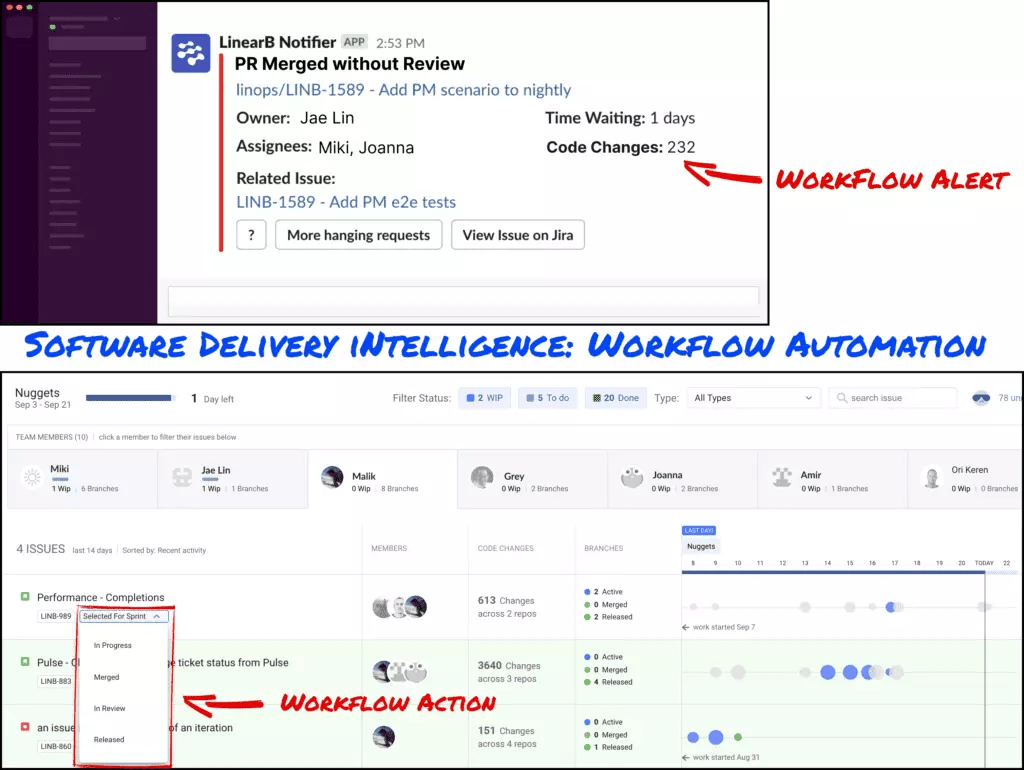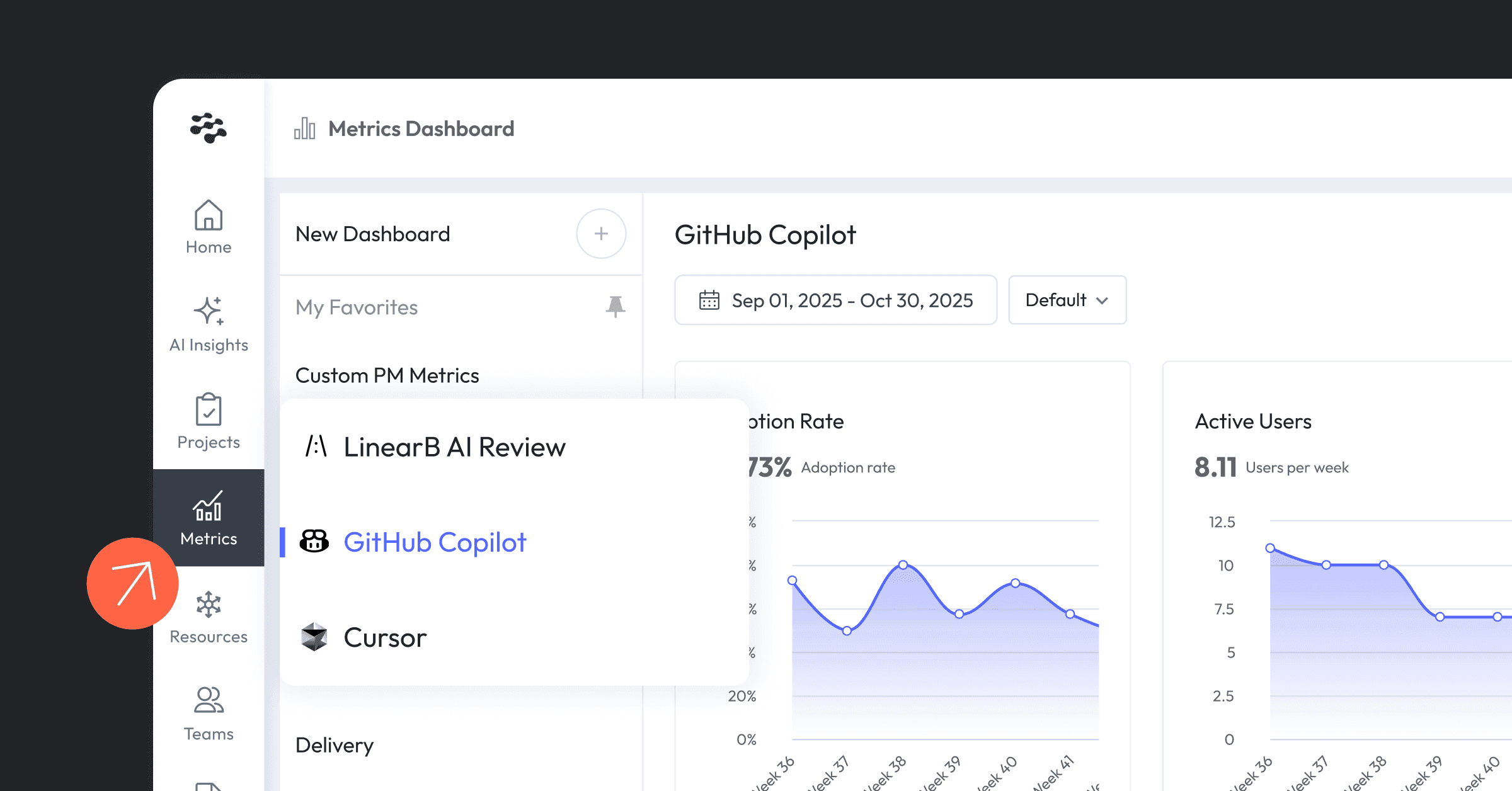Today we announced our Series A funding round of $16 million led by Battery Ventures, existing investors 83North and Ariel Maislos, and includes a new investor TechAviv Founder Partners. The investment brings LinearB’s total funding to $21 million.

How Do You Measure Art?
Five years ago when I was the VP of Engineering at the second scale-up I had helped lead, software development was identified as more of an art form than something that could be measured. Having been a software developer, team leader, and manager in the past, I didn’t necessarily disagree.
There are many ways to solve for x, and the best developers, like great artists, use a combination of knowledge and creativity to get the highest quality results. But developers also have to make hundreds of microdecisions every day when building a new feature. I always told my teams, “There is a business decision in every line of code.”
Sales and marketing are forms of art as well, yet the leaders of those organizations at both of my scale-up journeys were very capable of measuring their form of art. As the engineering leader, I knew something was missing.
Metrics Alone Do Not Improve Dev Teams
I was not the only one who wanted a dashboard to help measure the progress of my engineering organization. CTOs and VPs at modern companies either built their own scripts or bought early technology that would help them track engineering productivity.
Unfortunately early attempts at this had a blindspot to the cultural impact when they tried to mimic Sales and focused on individual developers’ impact. Which very quickly led to bad culture and undesired behaviors.
During this first attempt, engineering leaders learned two painful lessons:
- Measuring individual performance hurts team culture.
- Giving metrics only to CTOs and VPs does not improve dev teams.
I knew the engineering community needed to try a different approach. My idea at the time was to bypass individual performance and take a more team-based approach. Software development is a team-based sport at all.
By starting to measure team-based metrics I was able to track meaningful data without hurting the culture I had so carefully cultivated. It was great! I was able to walk into the CEOs weekly staff meeting and present a dashboard just like my counterparts in Marketing and Sales. But now that I was tracking numbers, I had to start showing improvement, week over week.
Continuous Improvement
How can an engineering organization apply data to create continuous improvement?
After I left my second scale up organization, which was acquired by a large company, I couldn’t stop thinking about this question. This was also the time when I reached out to my LinearB co-founder and like-minded friend Dan Lines. We both agreed that software delivery pipeline visibility is great, but it didn’t actually help dev teams improve. We needed to break down the problem before we could understand how to solve it.
There are 3 major levels in engineering organizations:
The Engineering Executive: This role entails setting the strategic vision, creating budgets, hiring, deploying resources and reporting to the CEO.
Supplemental Responsibility: Translating engineering to executives
Dev Team Leader: This role runs a team, manages people, cares about delivery and seeks out multipliers for team-level improvement.
Supplemental Responsibility: Helping the team improve how they work
Software Engineer: Set architecture, develop new features, keep security, SRE, testing, automation et al. top of mind.
Supplemental Responsibility: Help your teammates
Engineering organizations needed technology that would go beyond metrics and visibility. They needed technology that was going to help translate why engineering leaders needed additional resources for non-functional stories by providing context across development lifecycle systems. They needed a platform that would help team leaders detect bottlenecks for team-level improvement and one that provided developers with the right information in the right place at the right time.
If engineering leaders wanted development teams to improve, they needed a framework that was dev-first and bottom-up, not a top down scorecard.
They needed Software Delivery Intelligence…
Software Delivery Intelligence
Dan and I started LinearB in 2019 to help dev teams become more data-driven. We had both felt pains due to a lack of visibility into basic data about the performance of our teams and projects. We realized that metrics weren’t quite enough to solve the problem because many teams weren’t sure what the metrics meant and what to do with them to improve. So in 2020 we expanded our mission and gave it a name: Software Delivery Intelligence.
Software Delivery Intelligence is the combination of three efforts, each relating to one of the three levels and responsibilities in an engineering organization .
Visibility: The actual responsibility of the VP of Engineering is to translate what is happening in engineering to the other executives. Resource Allocation, Efficiency, progress, cost and forecasting all have to be visualized and translated to the business.

Context: The actual responsibility of a dev team leader is to manage projects across systems. They need to detect bottlenecks in the development lifecycle, unblock team members, keep the work focused and make sure the team is not overloaded.

Workflow: The actual responsibility of a developer is to focus on their craft, own their areas of responsibility, and to understand when other team members need help.

We learned early on that metrics alone do not improve software development teams. We could put all of the data in the world into the hands of executives and still see a lack of improvement. We knew that metrics were never going to be enough. Engineering leaders need context to understand what engineering metrics mean, and they need actionable ways to apply them to create improvement.
As a product, we knew our continued success was based on our ability to complete the continuous improvement cycle. So that’s what we did, and that’s why LinearB works.
Why We Are Taking Capital
I first want to say that getting to this point and announcing our $16 million Series A funding has made me incredibly proud of our team. Due to the team’s hard work, in the past 6 months we have gone through a hyper growth period of over 1100 new dev teams adopting the LinearB platform. Many of the most modern dev teams in the world, from incredible scale-ups that are pushing the boundaries of mature markets like Clubhouse.io to the next wave of unicorns like BigID.
Why have so many companies started using LinearB?
Because 50% of organizations improved their Cycle Time by 63% or more within 60 days of using LinearB’s Software Delivery Intelligence Platform.
We have discovered a significant way to help software development teams improve how they work. Many platforms provide metrics for dev teams. Our secret sauce is that we complete the continuous improvement cycle by providing project context and workflow automation for the people who are actually doing the work. We built our platform for developers.
CTOs and VPs of Engineering use LinearB on a weekly basis to review team-level metrics, and Team Leaders use LinearB to identify bottlenecks and focus the team at the project level. Developers, individual contributors, use LinearB EVERY DAY because it saves them time.

What Next For LinearB?
We’ve proven that the most modern software development teams in the world use LinearB for continuous improvement. We are taking our Series A funding round to expand our offering beyond the early adopters, to the global community of software engineering teams who are ready to modernize and continuously improve the way they work.
I am proud to say that we are going to continue providing LinearB to dev teams for free. We’ve always had a core value to serve the community and help development teams improve the way they are already working. With respect to that, our product map moving beyond our Series A is focused on putting LinearB in the hands of the global enterprise community.
At a more actionable level we will be expanding our product offering by adding more developer tool integrations and increasing our workflow automation efforts. LinearB is already pioneering the way for fully automated workflows at the developer level. Teams can configurable custom alerts and set real-time automated workflows that help enforce team parameters and automate-away menial tasks.
We Are Here Because Of You
The past two years have been extraordinary. But none of this would be possible without our amazing and engaged LinearB users. Both our customer base and our Dev Interrupted community has provided enormous feedback and support while we turned our vision into the reality that is LinearB today. Thank you.
If you’re learning about LinearB for the first time today, please don’t hesitate to engage with us.
Our product is free for dev teams, our drift chat is ready to answer your questions, and our community of 700+ dev leaders is active every day discussing how we can be better leaders.
Our Series A announcement today is the most recent milestone in a long journey that will undoubtedly change the way our software development community works forever.




